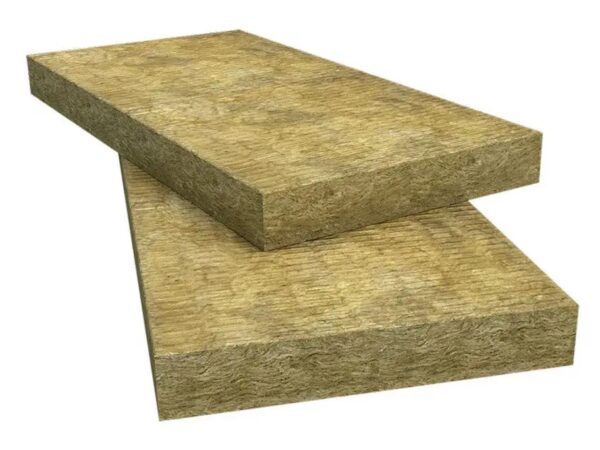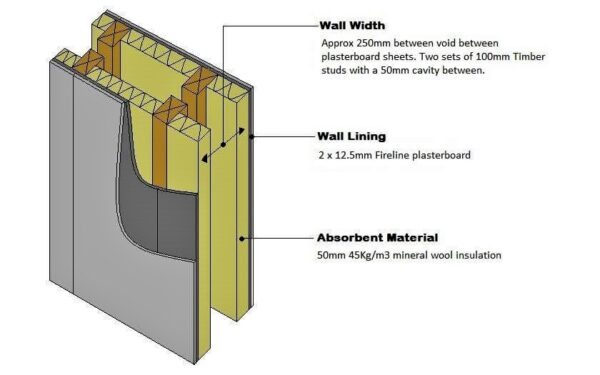Sound Proofing – Absorption in Party Walls
The 3rd element of a robust soundproofing design (or acoustic design) is the introduction of noise absorption materials within the party wall construction. Your acoustic requirements, i.e., the required sound insulation levels, and the types of walls you’re working with i.e. timber, metal or masonry will determine the required sound insulation. In all cases, careful selection of good quality soundproofing insulation materials will contribute towards a successful sound test in compliance with Approved Document E. Absorption materials can be acoustic slabs and acoustic rolls.

Using Acoustic Slabs in Party Walls.
When used in tandem with the other 3 acoustic elements Adding Mass, Decoupling of Materials and Noise Damping, adding noise absorption via acoustic insulation can be integral in the overall party wall design and construction. Acoustic insulation is good at removing low-level noise issues and can be quite easy to handle and install. The acoustic slabs are dense and effectively block out noise frequencies across party walls and floors in blocks of flats etc.
Installing acoustic soundproofing slabs in a party wall.
When you’re working on metal of timber stud walls, you can simply insert the acoustic slab straight onto the wall, making sure it’s fitted neatly between the metal /timber studs with no sagging or holes in the material. You can then install the rest of your acoustic solution such as resilient bars and acoustic plasterboard and apply an acoustic sealant around all gaps and holes.

Getting the soundproofing design right from the word go, is key, and APT Sound Testing can help in all areas of acoustic design and sound insulation testing. Get in touch on info@aptsoundtesting.co.uk to request a quote or call us on 01525 303905 to discuss your development.
Please Note: although we take every care to ensure the information was correct at the time of publication. Any written guidance provided does not replace the user’s professional judgement. It is the responsibility of the duty-holder or person carrying out the work to ensure compliance with relevant building regulations or applicable technical standards
